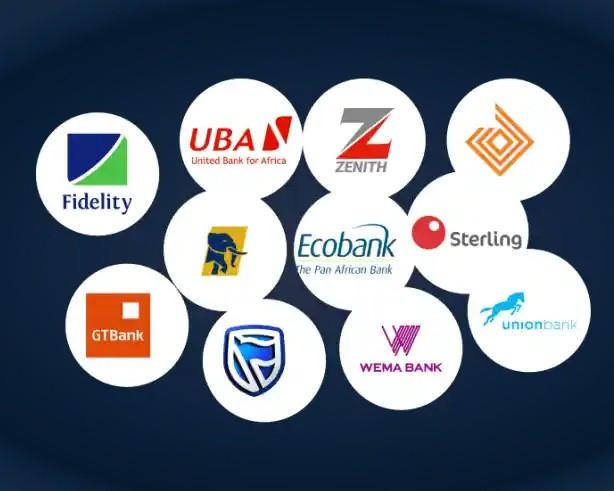
“NIGERIAN BANKS SET TO SECURE N900BN FRESH CAPITAL IN 2025: RECAPITALISATION DRIVE GAINS MOMENTUM”

GREATRIBUNETVNEWS–Nigerian banks are expected to attract an additional N900 billion in fresh capital in 2025 as the Central Bank of Nigeria’s (CBN) recapitalization deadline draws near. According to the latest Nigerian Banking Industry Report by Agusto & Co., the sector has been witnessing significant fundraising efforts to meet the new capital thresholds.
Key Highlights:
– N900bn Fresh Capital: The report projects that Nigerian banks will secure an additional N900 billion in fresh capital in 2025, providing a buffer against business risks and supporting growth plans.
– Eight Banks Already Compliant: Eight banks have already met the minimum paid-up capital directive as of July 31, 2025, ahead of the March 31, 2026 deadline.
– Capital Raised: In 2024, 16 banks raised N1.7 trillion, while N800 billion was mobilized in the first seven months of 2025.
– CBN Requirements: Commercial banks with international authorization must increase their capital base to N500 billion, national banks to N200 billion, and regional banks to N50 billion. Non-interest banks with national and regional authorizations need to increase their capital to N20 billion and N10 billion, respectively .
Implications:
– Stable Outlook: Agusto & Co. has assigned a “stable” outlook to the sector, indicating a positive trajectory for Nigerian banks.
– Increased Resilience: The recapitalization drive is expected to enhance the resilience of Nigerian banks, enabling them to support large-scale economic projects and align with global standards of risk-based supervision.
Analysts have estimated that banks in the country would need to raise about N4.2tn within the set timeframe. At the end of 2024, the Securities and Exchange Commission revealed that about N1.7tn had been raised from the capital market.
The CBN Governor, Olayemi Cardoso, at the last meeting of the Monetary Policy Committee, revealed that eight banks have already crossed the hurdle. With less than a year to the expiration of the CBN deadline, other banks have started the second leg of their capital raise.
The Agusto report stated the introduction of the minimum paid-up capital in March 2024 drove recapitalisation activities in the industry.
“About N1.7tn was raised by 16 banks in FY 2024. Similarly, circa N800bn was raised in the first seven months of 2025. Thus, eight banks have complied with the minimum paid-up capital directive as of July 31, 2025, ahead of the March 31, 2026 deadline. However, the mandatory verifications by the Central Bank of Nigeria and the Securities and Exchange Commission are pending on some of the capital raised.
“We anticipate the injection of an additional N900bn as a significant number of banks strive to comply with the minimum capital directive before December 31, 2025. Thus, providing an additional capital buffer for current business risks and near-term growth plans,” read part of the report.
Agusto & Co acknowledged the strong showing from domestic investors as it noted that they provided most of the capital raised by the banks in the last 19 months, reflecting the acceptability of the industry by Nigerians.
However, the rating firm noted that the CBN’s termination of regulatory forbearance would impact the industry’s profitability indicators for the current financial year, with a rebound expected next year.
“As of December 31, 2024, 5.2 per cent of the industry loan book was adjudged as non-performing, higher than the four per cent recorded in the prior year, based on the deterioration of some credit facilities and the bloating impact of the 40.4 per cent naira depreciation during the year. We note that some non-performing loans benefitting from regulatory forbearance were included in the stage 2 category as of December 31, 2024. In June 2025, the CBN terminated the regulatory forbearance. Thus, all loans are expected to be classified appropriately with the required provisions taken.
“All credit exposures are also expected to comply with the prescribed single obligor limit. In our view, the ongoing capital-raising activities will resolve most of the SOL breaches on some exposures hitherto under forbearance. We also anticipate a surge in write-offs as some banks leverage the transition relief (waiver on the 12-month mandatory waiting period for duly provisioned impaired loans before write-offs) to address non-performing forbearance loans. Notwithstanding, we believe the industry’s impaired loan ratio will surge 6.9 per cent as some non-performing forbearance loans are classified appropriately. However, we expect a reduction in the impaired loan ratio before December 31, 2026, as the non-performing loans are resolved,” read the report.
Agusto & Co. added that the high-yield environment sustained the banking industry’s performance in 2024.
The firm stated, “In FY 2025, we anticipate a decline in profitability indicators. The need for the appropriate provision level on the hitherto forbearance loans will drive a surge in the impairment charge. The decision of some banks to accelerate the provision coverage and write off some impaired loans as part of the transitional reliefs will also contribute to higher impairment charges.
“In addition, we anticipate lower foreign currency revaluation gains that have bolstered profitability since FY 2023. Overall, we expect a 19.2 per cent decline in profit before taxation, with the pre-tax return on average equity plummeting 27.3 per cent (FY 2024: 48.2 per cent) in FY 2025. However, the industry’s profitability is expected to rebound in FY 2026 as the proceeds of the capital-raising activities are fully deployed and the impact of the uptick in the impairment charge is moderated.”
In a June 2025 circular, CBN barred some banks from paying dividends, bonuses and investments in foreign subsidiaries over regulatory forbearance in respect of the Single Obligor Limit and other credit facilities. In another circular, it mandated banks to submit a capital restoration plan as part of regulatory efforts to support the exit from the forbearance regime.
The capital restoration plan is expected to include different banks’ management-proposed strategies to restore full regulatory compliance, including (but not limited to) cost optimisation initiatives, risk asset reduction, significant risk transfers, and necessary business model adaptations.
Also, the CBN said lenders are required to submit quarterly disclosures on key metrics, which will aid regulatory transparency and support supervisory oversight.
Effective June 30, 2025, banks are to disclose “detailed provisioning status and reconciliation of affected credit exposures.” CAR calculations with and without transitional reliefs. Classification of migration data for restructured or impacted loan facilities and comprehensive disclosure of AT1 instruments, including issuance terms, usage, and related conditions.”
SOURCE== PUNCH ==EXCEPT THE HEADLINE AND INTRO







